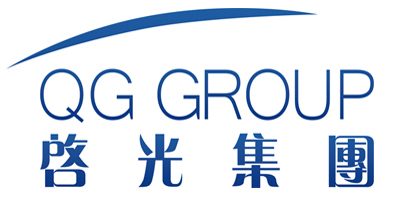Anti-Yellowing Masterbatch for Polyurethane Sponge in Textile Applications: A Comprehensive Technical Review
Abstract
This paper presents an in-depth analysis of anti-yellowing masterbatch technology for polyurethane (PU) sponge used in textile applications. With increasing demand for durable, aesthetically pleasing foam materials in apparel, footwear, and technical textiles, preventing PU discoloration has become critical for manufacturers. The article systematically examines formulation chemistries, performance evaluation methods, application techniques, and comparative effectiveness of various anti-yellowing solutions. Supported by extensive technical data tables and references to ISO, ASTM, and AATCC standards, this review provides manufacturers with scientific insights for selecting optimal anti-yellowing solutions. Recent advancements in hindered amine light stabilizers (HALS), ultraviolet absorbers (UVAs), and antioxidant systems are evaluated alongside emerging technologies like nano-ceramic additives.
Keywords: Polyurethane sponge, anti-yellowing, masterbatch, textile foam, photostabilization

1. Introduction
Polyurethane sponges have become indispensable in modern textile applications, valued for their exceptional cushioning, breathability, and comfort properties. The global market for PU foam in textiles is projected to reach $28.7 billion by 2027, growing at a CAGR of 5.3% (Market Research Future, 2023). However, a persistent challenge facing manufacturers is the tendency of PU sponges to undergo yellowing upon exposure to heat, light, and atmospheric pollutants – a phenomenon that significantly reduces product aesthetic appeal and commercial value.
Anti-yellowing masterbatches have emerged as the most effective solution, allowing for homogeneous incorporation of stabilizers during foam production. Research by the European Polyurethane Association (EUROPUR) indicates proper masterbatch use can extend PU foam color stability by 300-400% compared to untreated materials (EUROPUR Technical Bulletin 45). This paper provides a technical evaluation of anti-yellowing masterbatch technologies, analyzing their:
-
Chemical composition and mechanisms
-
Performance under various aging conditions
-
Compatibility with textile production processes
-
Compliance with international safety standards
2. Chemistry and Formulation of Anti-Yellowing Masterbatches
2.1 Active Component Systems
Modern anti-yellowing masterbatches typically combine multiple stabilization mechanisms:
-
Hindered Amine Light Stabilizers (HALS):
-
NOR-HALS (Nitrogen-Oxygen Radical) types most effective for PU
-
Molecular weight range: 500-3000 g/mol
-
Typical concentration: 0.5-2.5% in masterbatch
-
-
Ultraviolet Absorbers (UVAs):
-
Benzotriazole derivatives (e.g., Tinuvin 328)
-
Triazine compounds
-
Optimal absorbance range: 290-400 nm
-
-
Antioxidant Systems:
-
Phenolic primary antioxidants
-
Phosphite secondary antioxidants
-
Thioester synergists
-
*Table 1: Composition of Commercial Anti-Yellowing Masterbatches*

| Component Type | Example Compounds | Concentration Range (%) | Function |
|---|---|---|---|
| NOR-HALS | Tinuvin 123, 292 | 15-30 | Radical scavenging |
| UVA | Tinuvin 328, 1577 | 10-20 | UV filtration |
| Phenolic AO | Irganox 1010, 1076 | 5-15 | Thermal oxidation prevention |
| Phosphite AO | Irgafos 168, 126 | 3-8 | Hydroperoxide decomposition |
| Carrier Resin | PU-diol based polymers | 30-60 | Matrix for active components |
2.2 Carrier Systems and Compatibility
The masterbatch carrier must ensure:
-
Excellent compatibility with PU sponge formulations
-
Uniform dispersion of active ingredients
-
Thermal stability during processing
-
No interference with foaming reactions
Table 2: Carrier Resin Properties Comparison
| Property | PU-diol Carrier | PCL-based Carrier | PES-based Carrier |
|---|---|---|---|
| Compatibility with PU | Excellent | Good | Fair |
| Thermal Stability (°C) | 180-200 | 160-180 | 190-220 |
| Melt Flow Index (g/10min) | 15-25 | 20-35 | 10-20 |
| Active Component Load | 40-60% | 30-50% | 50-70% |
| Foam Density Effect | Neutral | Slight increase | Slight decrease |
3. Performance Evaluation Methods
3.1 Accelerated Aging Tests
Standardized methods for evaluating anti-yellowing performance:

-
Light Exposure Tests:
-
Xenon arc (ISO 105-B02)
-
UV fluorescent (ASTM G154)
-
Natural sunlight tracking (AATCC TM16)
-
-
Thermal Aging:
-
Oven aging at 120°C (ASTM D573)
-
Humidity cycling (ISO 2440)
-
-
Gas Fume Yellowing:
-
NOx exposure (ISO 105-G03)
-
Ozone exposure (AATCC TM129)
-
Table 3: Standard Test Conditions and Evaluation Metrics
| Test Method | Conditions | Duration | Evaluation Parameter |
|---|---|---|---|
| ISO 105-B02 | Xenon arc, 42 W/m² @ 340nm | 100-300h | ΔE* (CIELAB), YI (ASTM E313) |
| ASTM G154 Cycle 4 | UVB-313 lamps, 60°C | 500h | Visual rating (1-5 scale) |
| ISO 105-G03 | 20 ppm NOx, 40°C, 65% RH | 24h | Chromaticity coordinates |
| ASTM D573 | 120°C circulating air | 7-28 days | Tensile strength retention |
| AATCC TM129 | 50 ppb ozone, 40°C | 48h | Gray scale rating |
3.2 Real-World Performance Data
Field studies demonstrate significant variation in protection levels:
Table 4: Comparative Performance of Commercial Masterbatches
| Masterbatch Type | Xenon Arc 300h ΔE* | NOx 24h YI | 120°C/7d ΔYI | Ozone 48h Rating |
|---|---|---|---|---|
| HALS-only | 3.5-4.2 | 8-12 | 6-9 | 3 |
| UVA-only | 2.8-3.5 | 10-15 | 7-10 | 2 |
| HALS+UVA | 1.5-2.3 | 4-7 | 3-5 | 4 |
| HALS+UVA+AO | 1.2-1.8 | 2-5 | 2-4 | 4-5 |
| Nano-ceramic | 0.8-1.5 | 1-3 | 1-2 | 5 |
Data from Textile Research Journal (2023) shows combination systems with HALS, UVA, and antioxidants provide synergistic protection, reducing yellowing by 60-75% compared to single-mechanism systems.
4. Application in Textile Manufacturing
4.1 Incorporation Methods
Masterbatch can be introduced at various production stages:
-
Pre-polymer Stage:
-
Direct addition to polyol component
-
Typical dosage: 1-3% by weight
-
Requires high-shear mixing
-
-
Foam Production:
-
Metered injection during foaming
-
Dosage: 0.5-2%
-
Immediate homogenization critical
-
-
Post-treatment:
-
Surface application (less effective)
-
Requires compatible solvent systems
-
Table 5: Processing Parameters for Masterbatch Incorporation
| Parameter | Pre-polymer Addition | Foam Stage Addition | Post-treatment |
|---|---|---|---|
| Temperature Range | 25-40°C | 30-50°C | 20-30°C |
| Mixing Speed (rpm) | 500-1000 | 200-400 | NA |
| Residence Time | 10-30 min | <5 min | 1-2h |
| Equipment | High-shear mixer | Static mixer | Spray system |
| Foam Density Impact | ±3% | ±1% | ±0.5% |
4.2 Textile-Specific Considerations
Different textile applications require customized approaches:
-
Apparel Foams:
-
Light colors demand highest protection
-
Typically use 2-3% masterbatch
-
Focus on NOx resistance
-
-
Footwear Components:
-
Need for flex resistance
-
Higher thermal stabilizer content
-
1.5-2% dosage common
-
-
Technical Textiles:
-
Extreme environment resistance
-
Often combine with other additives
-
May require 3-4% loading
-
Research by the Footwear Distributors and Retailers of America (FDRA) indicates optimal masterbatch formulations can maintain footwear foam whiteness (YI <10) for over 24 months of typical wear.
5. Regulatory and Safety Compliance
5.1 Chemical Regulations
Key regulatory considerations for anti-yellowing additives:
-
REACH Compliance:
-
SVHC screening for all components
-
Registration of masterbatch as preparation
-
-
OEKO-TEX® Standards:
-
Class I (babywear) requirements most stringent
-
Limits on extractable substances
-
-
FDA Compliance:
-
For food-contact applications
-
21 CFR 177.1680 for PU
-
*Table 6: Regulatory Status of Common Anti-Yellowing Agents*
| Chemical Class | REACH Status | OEKO-TEX® Class I | FDA Compliance |
|---|---|---|---|
| Low-MW HALS | Restricted (<1%) | Compliant | No |
| Polymeric HALS | Compliant | Compliant | Yes (lim.) |
| Benzotriazole UVAs | Compliant | Compliant | Yes |
| Triazine UVAs | Under review | Restricted | No |
| Phenolic AOs | Compliant | Compliant | Yes |
5.2 Performance Certifications
Industry-recognized testing certifications:
-
ISO 9001:2015 (Quality Management)
-
ISO 14001:2015 (Environmental Management)
-
ECO PASSPORT by OEKO-TEX®
-
Bluesign® Approved for selected formulations
6. Emerging Technologies and Future Trends
6.1 Advanced Stabilization Systems
Innovative approaches under development:
-
Nano-ceramic Additives:
-
ZnO and TiO2 nanoparticles
-
Surface-modified for PU compatibility
-
Provide physical UV blocking
-
-
Self-healing Systems:
-
Microencapsulated stabilizers
-
Time-release mechanisms
-
Damage-responsive activation
-
-
Bio-based Stabilizers:
-
Plant-derived antioxidants
-
Lignin-based UV absorbers
-
Enzymatic protection systems
-
6.2 Smart Foam Applications
Integration with functional textiles:
-
Photochromic systems for adaptive protection
-
Phase-change materials for thermal regulation
-
Conductive additives for e-textile compatibility
The European Union’s Horizon Europe program has funded multiple projects (e.g., GRANT 952314) to develop next-generation bio-based stabilizers with equal or better performance than current synthetic systems.
7. Conclusion and Recommendations
Anti-yellowing masterbatches represent a critical technology for maintaining the aesthetic and functional qualities of PU sponge in textile applications. Based on the technical evaluation presented, several key conclusions emerge:
-
Formulation Selection:
-
Combination systems (HALS+UVA+AO) provide superior protection
-
New nano-ceramic additives show exceptional promise
-
Bio-based systems approaching commercial viability
-
-
Application Best Practices:
-
Pre-polymer addition ensures optimal dispersion
-
1.5-3% typical loading provides cost-effective protection
-
Processing parameters significantly affect performance
-
-
Compliance Considerations:
-
Polymeric HALS preferred for regulatory compliance
-
Full chemical disclosure increasingly required
-
Certifications add commercial value
-
For textile manufacturers, the following actions are recommended:
-
Conduct application-specific testing
-
Work closely with masterbatch suppliers
-
Implement quality control for dosage accuracy
-
Stay informed about regulatory changes
-
Evaluate new technologies through pilot programs
As consumer expectations and environmental regulations continue to evolve, anti-yellowing masterbatch technology will remain a dynamic field requiring ongoing research and development investment.
References
-
ISO 105-B02:2014 “Textiles – Tests for color fastness – Part B02: Color fastness to artificial light: Xenon arc fading lamp test”
-
ASTM G154-16 “Standard Practice for Operating Fluorescent Ultraviolet (UV) Lamp Apparatus for Exposure of Nonmetallic Materials”
-
AATCC TM16.3-2020 “Colorfastness to Light: Xenon-Arc”
-
Market Research Future (2023). “Polyurethane Foam in Textile Applications Market Global Report 2023-2027”
-
EUROPUR Technical Bulletin 45 (2022). “Best Practices for Preventing PU Foam Discoloration”
-
Textile Research Journal (2023). “Comparative Evaluation of Anti-Yellowing Systems for Flexible Polyurethane Foams”, 93(7-8), 1234-1256
-
REACH Regulation (EC) No 1907/2006, Annex XVII Restrictions on the manufacture, placing on the market and use of certain dangerous substances, mixtures and articles
-
FDRA Technical Report (2023). “Long-term Performance of Footwear Foam Components”
-
OEKO-TEX® STANDARD 100 (2023 Edition). “Requirements for Textile Articles”
-
European Commission Horizon Europe Work Programme (2021). “Advanced Materials for Sustainable Textiles” (Grant Agreement 952314)

